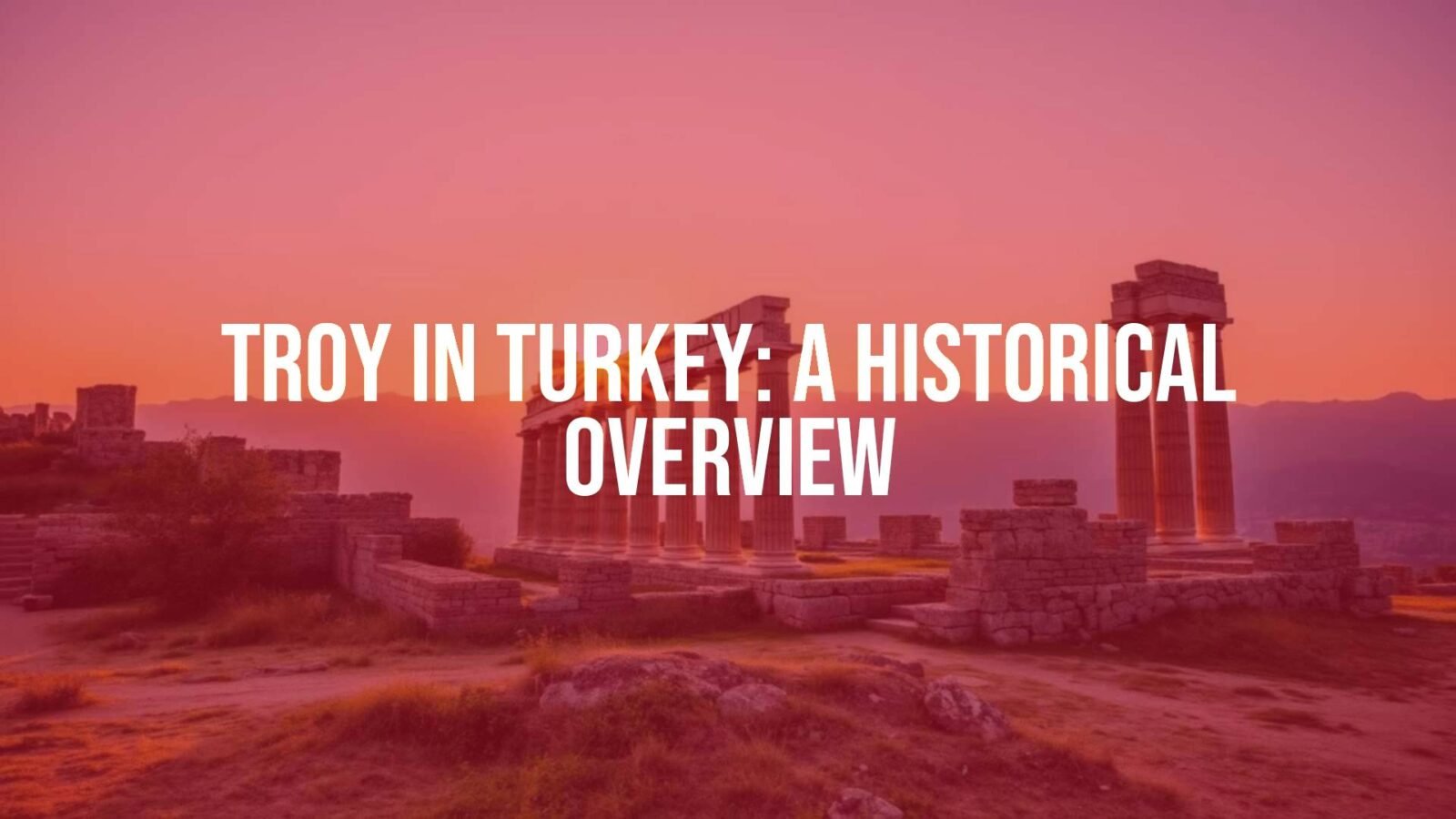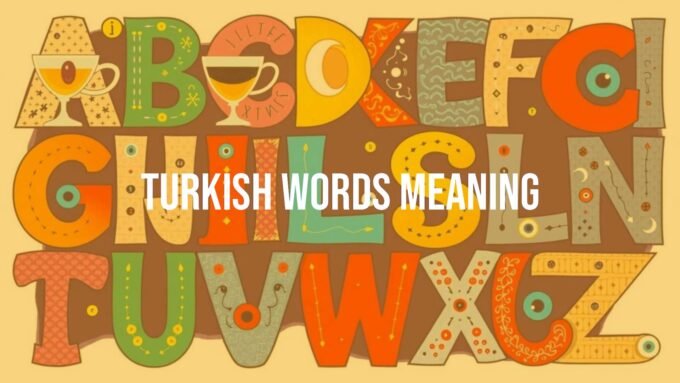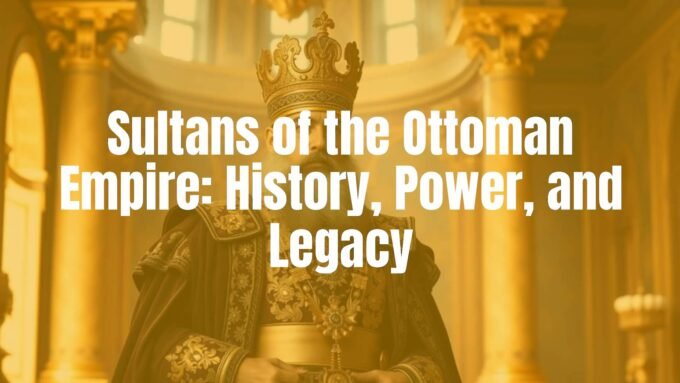Troy is a name that brings to mind famous stories of war, clever tactics, and legendary heroes. But Troy is not just a story from Homer’s poetry-it is an actual ancient city in northwest Turkey, in the province of Çanakkale. The ruins are at Hisarlık, close to the village of Tevfikiye. For thousands of years, this place has interested people from all over the world, providing a lot of new information for archaeologists and historians as they learn more about the real events behind the legends.
Troy’s history is a mix of legend, literature, and real archaeological discoveries. The city’s story begins with a simple settlement and grows into a powerful city, known for trade, war, and later as a place for visitors during Roman times. Troy’s location on important trade routes made it valuable and often fought over, so its history includes many times of both destruction and new beginnings.
Where is Troy in Turkey?
Location and surroundings
Troy is in northwestern Anatolia, in an old region called the Troad. This area stretches into the Aegean Sea and gave Troy an important location. The city is on the end of a small ridge known as Hisarlık, which rises about 31 meters above the plain and stands 38.5 meters above sea level. The many layers of old cities are stacked one on top of the other, marking thousands of years of people living in the same spot.

Troy’s ruins are about 4.8 kilometers (3 miles) away from the Dardanelles, a narrow passage that connects the Black Sea to the Aegean Sea. Being close to this waterway allowed Troy’s rulers to control movement between major seas and made it a key point for both trading and military power. Today, the city is also near the plain of the Scamander River (Küçükmenderes Çayı), and the coastline has changed a lot since ancient times due to the buildup of river deposits.
Why the site was important
The land around Troy includes flat, rich farmland and higher points that were easy to defend. The Hisarlık mound gave residents a good view of the plains and sea, making it easier to spot oncoming threats. This spot also made Troy powerful in both land and sea trade. Another big reason for Troy’s early success was a land route running north along the west Turkish coast, connecting across the narrowest part of the Dardanelles. Because of these advantages, Troy was often attacked and rebuilt, as many different groups wanted to control its resources and wealth.
Start and Early History
Legendary beginnings and real origins
Greek myths talk about Troy’s founders-often mentioning names like Tros and Ilus, and linking the city to gods and heroes. The legend says Zeus and Electra’s son Dardanus started the area, then Dardanus’s grandson Ilus built Troy. While these stories are myths, they show how people long ago saw Troy as very old and important.
Facts from archaeology show people lived at Hisarlık from about 3600 BCE. The first settlement, sometimes called Troy 0, was small and simple. Around 3000 BCE, people began building stronger walls and homes, marking the start of “Troy I.”
Settlements before Troy I
Long before the well-known city, people already lived in the area-Troy 0 is the term for this oldest layer. Finds like pottery and remains of wooden structures are signs of early life, even before Troy’s famous city walls. Those who built Troy I probably came from nearby villages, joining together for safety and prosperity. They started building stone walls for defense, a style that continued throughout Troy’s history.
Timeline: Troy’s Historical Layers
Troy is made of many layers, with each one telling the story of a different period. Archaeologists use Roman numbers (I to IX) for each phase, and each layer shows new ways people built, traded, and lived.
| Layer | Dates | Main Features |
|---|---|---|
| Troy I | 3000-2550 BCE | First stone walls, small houses, “megaron” layout, dark pottery, copper artifacts |
| Troy II | 2550-2300 BCE | Larger city, strong stone walls, two zones, wheel-made pottery, imported treasures |
| Troy III-V | 2300-1750 BCE | Smaller settlements, reuse of earlier walls, Anatolian bowls, some imported items |
| Troy VI | 1750-1300 BCE | Major growth, tall stone walls, large houses, signs of trade, no Hittite finds |
| Troy VIIa | 1300-1180 BCE | Rebuilt city, crowded housing, storage jars, signs of siege, destruction by fire |
| Troy VIIb | 1180-950 BCE | Continued use of old walls, new pottery, possible arrival of outsiders, earthquakes and fire |
| Troy VIII | 950-85 BCE | Greek settlers, temples, theaters, rebuilt walls, city becomes “Ilion” |
| Troy IX | 85 BCE-500 CE | Roman city, strong Roman support, new buildings, earthquakes end this phase |

Troy in Ancient Writings and Myths
Mentions in Hittite documents
Troy, under the name Wilusa or sometimes Truwisa, appears in letters written by the Hittites-a powerful kingdom in what is now Turkey. These Hittite texts date from about 1750 to 1200 BCE and describe Wilusa as part of an alliance (the Assuwa Confederation) and later as an ally to the Hittites. The names and places in these records closely match Troy, suggesting the city was involved in the politics and wars of the Late Bronze Age. They mention kings named Kukkunni and Alaksandu (similar to the Greek “Alexandros” or Paris), who had good relations with the Hittites. Although the records don’t mention a Trojan War, they show Troy was an active player in its time and perhaps the real-life inspiration for later stories.
Homer’s Iliad and the Trojan War
Most people know Troy because of Homer’s epic poem, the Iliad, which tells of a long, dramatic war sparked by the elopement of Helen, queen of Sparta, with Paris from Troy. In Homer’s version, Troy is a rich city with strong stone walls, big gates, wide streets, and a palace on the highest hill. The war involves Greek leaders, gods, and famous duels between heroes. The Iliad focuses on the final year of the siege and many individual battles, while another story (the Odyssey) and later sources describe the trick of the Trojan Horse, which let Greek soldiers sneak into the city and win the war. These stories shaped how people saw Troy for centuries.

Troy in later Greek and Roman tradition
Long after Homer, Greek and Roman leaders believed the Trojan War had really happened. Alexander the Great visited the site and wanted to honor its heroes. The Romans said they were descended from Aeneas, a Trojan prince, whose story is told in Virgil’s Aeneid. Because of these links, Troy/Ilion became an important place to visit, and Roman emperors helped rebuild and decorate the city. Troy’s myth continued to inspire people and helped make the city a lasting symbol of heroism and loss.
Main Archaeological Finds in Troy
Main ruins: walls, gates, and religious buildings
The Troy site is famous for its thick, tall stone walls, which protected the city in several periods. The walls of Troy VI, for example, are over 4.5 meters thick and more than 5 meters high, built in a zigzag style with gates and towers. These walls were rebuilt and improved many times. The city also had residential areas, paved streets, and public spaces. Later, Greeks and Romans added temples, theaters, and council buildings. The best-known temple was the sanctuary of Athena Ilias, and the Roman period added new theaters and public buildings.

Artifacts from different Troy phases
- Troy I: Handmade dark pottery, copper tools, a carved stone stele showing a warrior.
- Troy II: Wheel-made pottery, gold and silver jewelry (Priam’s Treasure), items made from materials imported from far away.
- Troy V: Local bowls (red-cross type) and Minoan imports.
- Troy VI: Tan and gray pottery, imported Mycenaean and Levantine goods, many horse bones.
- Troy VIIb: “Barbarian ware” pottery, a bronze seal with ancient writing.
These finds give clues about trade, daily life, and links to other ancient cultures.
Destruction layers and what they tell us
- Troy I, II: Burned down, probably because of fire, but maybe also attacks.
- Troy VI: Collapsed walls suggest a big earthquake, not a battle, as the city was not burned.
- Troy VIIa: Signs of burning and violence, with human remains found-possibly pointing to an enemy attack matching the famous war.
These destruction layers help date the city and show how people reacted to crises, sometimes rebuilding soon after disaster.
How Troy Was Excavated
Frank Calvert’s discovery
The first person to say Hisarlık was Troy was Frank Calvert, a local landowner with a strong interest in ancient history. In 1865, he started digging on his land after studying ancient texts, and his early work convinced others to look for Troy here. His efforts set the groundwork for finding the real location of Troy.
Heinrich Schliemann’s digs
Heinrich Schliemann, a wealthy businessman who loved Homer’s poems, started large excavations in 1870, helped at first by Calvert. Schliemann dug a vast trench through the mound, removing lots of soil quickly to reach older levels. While his methods damaged some remains, he was the first to show that Hisarlık was made up of many cities built on top of each other, and he made Troy famous around the world.
Wilhelm Dörpfeld’s improvements
Wilhelm Dörpfeld joined in the 1880s and brought more careful methods to the excavations. He studied the layers and concluded Troy VI fit Homer’s descriptions better than Troy II. Dörpfeld’s more organized approach made the work much more scientific and helped solve earlier confusion about the city’s history.
Carl Blegen’s detailed studies
In the 1930s, Carl Blegen and his team from the University of Cincinnati brought even more careful, step-by-step digging. They divided Troy’s history into more layers and found that Troy VIIa matched with the period of the Trojan War legends. Blegen’s team recorded their finds carefully, which has helped later research.
Recent work: Manfred Korfmann and beyond
After a long pause, digging at Troy started again in 1988 with Manfred Korfmann, who worked until 2005. His team discovered that the lower city was much bigger that previously thought, making Troy seem much more important. He also uncovered defenses against chariots, like wide ditches. Work on Troy has continued since then, with Turkish archaeologists focusing on new scientific tests and even finding even older layers under the known city (Troy 0).
Troy as a Heritage and Cultural Symbol
UNESCO World Heritage status
Troy was added to the UNESCO World Heritage List in 1998 because it shows 4,000 years of continuous life and change. The site’s many layers are a record of different peoples and cultures. The world recognizes Troy’s importance in both history and storytelling thanks to Homer and later writers. The UNESCO status helps protect Troy for future generations.
What Troy means for Turkey today
Troy is a proud symbol for modern Turkey. The government made the area a protected national park in 1996, and many tourists visit every year. The wooden horse monument at the entrance is a reminder of the famous story. In 2018, the Troy Museum opened, displaying many items found at the site, some returned from foreign museums. This helps save and share Turkey’s ancient heritage with the world.
Troy’s role in world archaeology
Troy is important not just for Turkey but for understanding ancient civilizations everywhere. The way archaeologists have studied Troy-layer by layer-shows how people built and rebuilt on the same spot for thousands of years. The debates about the reality behind the legend keep attracting new study and visitors. Troy sheds light on old trade, city design, and the connections between East and West. It’s more than just a story; it’s a key piece of understanding the human past.













Leave a comment